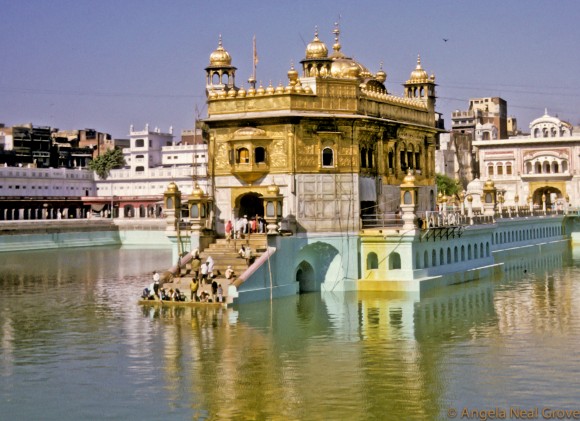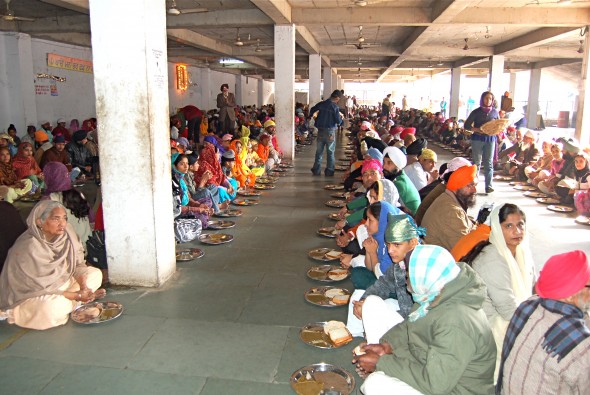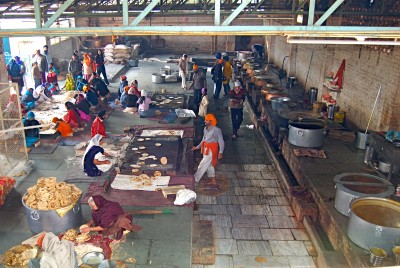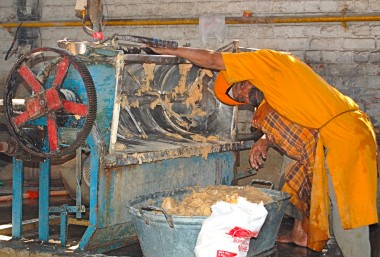
In April 1919 there were riots in the city of Amritsar, India. British Colonial Authorities declared martial law, banned public meetings. Brigadier General R. H. Dyer arrived to quell unrest.
What Happened in Amritsar?
What exactly unfolded on April 13, 1919 is still disputed. What is known is a peaceful crowd of 15,000 – 20,000 Hindus, Moslems and Sikhs gathered in a public garden to celebrate a religious holiday. There was also a protest against the British Raj. General Dyer ordered troops to open fire killing hundreds. The exact number, again, is disputed.
One Hundred Years Later
This weekend, one hundred years later, the Amritsar Massacre is again making headlines across the world. Some are calling for a formal British apology.
At the end of this post is a clip of a BBC interview with Kim Wagner whose book Amritsar 1919 was published by Yale University Press this February. There are also links to current articles and discussions on the event which, I hope, give a range of views and background.
My Personal Experience of Amritsar
I visited Amritsar when traveling overland from London to Nepal. There were times during this journey when it was rugged. I was seriously threatened outside a mosque in Meshad, Iran, and had rocks thrown at me in the bazaar in Kabul. I was, therefore, keeping a low travel profile and expecting little.
All Five Senses
Then there was Amritsar. I visited the Golden Temple, Amritsar, on a morning I shall never remember.
“Please come in!”
There were smiles and warm, welcoming gestures from those in the entrance to the Temple. (I could not believe they really wanted me to come in, this was culture shock after some recent experiences). I removed my shoes and entered a new world.
this warm welcome to the Sikh Holy Temple was like a balm
This warm welcome to the Sikh Holy Temple was like a balm. I walked into the cool interior where marble walls were inlaid with graceful floral motifs, in semi-precious stones and mother-of-pearl.
Here was something for each of the five senses. The scent of jasmin, touch, sound of sitar, a visual feast, and small sweet rice cakes to eat. This, combined with the atmosphere of peace and tranquility, created an indelible memory which shimmers like the golden domes of the building. It was an experience which will forever endure.
Food For 200,000, a Sikh Tradition
When I stepped back into the bright sun I visited the temple kitchens which are busy 20 hours a day. Huge vats of steaming stewed lentils and piles of warm naan were freshly prepared to feed the 200,000 hungry and homeless who come daily and sit cross-legged on the floor in orderly rows.
On my most recent visit to India I went to the Bangla Sahib Gurudwara Sikh temple in Delhi. Behind the temple are industrial-sized kitchens, similar to those at Amritsar, where hundreds of volunteers prepare food to feed up to 70,000 people daily. Being generous to the less fortunate and serving others
is a lynchpin of Sikh beliefs. Sikhism also stresses the importance of doing good deeds rather than merely following rituals. Once more memories of the experience and my respect for Sikhs endures.
So this weekend I ponder on my youthful impressions of my visit to Amritsar. The Golden Temple in the golden sunlight that morning long ago, which created Golden Memories for me. Then the horror, the brutality and the massacre which happened one hundred years ago today.
Many Indians feel the British should give a formal apology.
Should They?
From the International Press This Weekend
News Stories
From the Economist, From the New York Times, From: BBC
COMMENTS: All comments are welcome. Feedback is so important, lets create a dialogue. Please leave them below – or for my subscribers – you are special – at the end of this post on www.angelanealworld.com/india/amritsar-marks-grim-100th-anniversary
COMING NEXT: Atacama Desert, Chile, is still next – I wanted to write about Amritsar on this anniversary.


